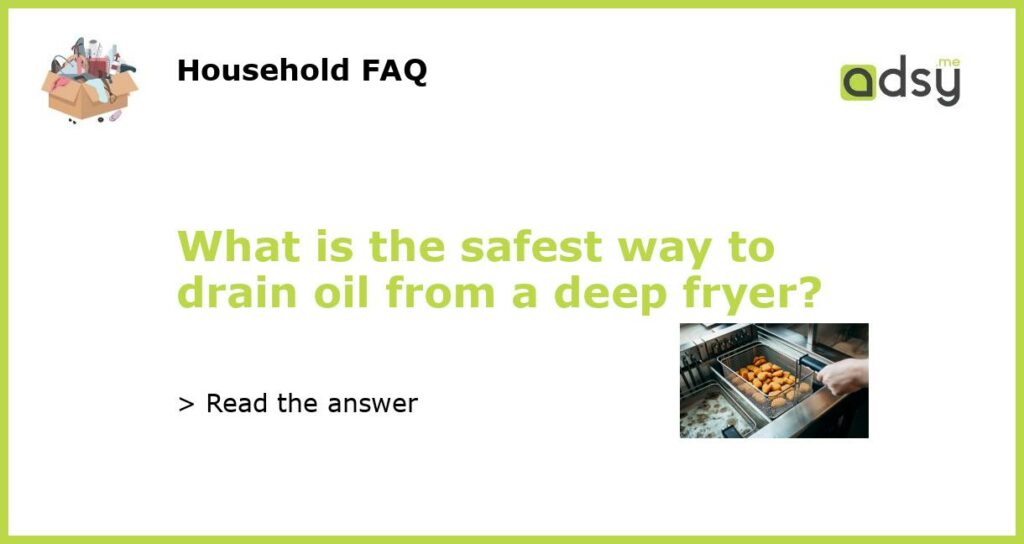Understanding the Importance of Safe Oil Draining
Deep frying involves immersing food in hot oil, which can be a messy and hazardous process. One of the most important aspects of deep frying is draining the oil from the fryer. When done incorrectly, oil can spill and cause burns or fires. The safest way to drain oil from a deep fryer is an essential skill that every home cook and commercial kitchen worker must learn.
Make Sure the Oil is Cool Enough to Handle
Before draining the oil, ensure that it is cool enough to handle. When oil is hot, it can cause severe burns if it splashes on your skin. Wait until the oil cools to around 100°F, which typically takes 1-2 hours after turning off the fryer. A safe way to check the temperature is to insert a cooking thermometer into the oil.
Choose the Right Container to Drain the Oil
Choose a container that is heat-resistant, and large enough to accommodate the amount of oil in the fryer. A metal container such as a coffee can is ideal for holding hot oil, as it won’t crack or melt under heat. Avoid using plastic containers, as hot oil can melt or deform them, leading to a mess or injury.
Turn off the Fryer and Unplug it
Before draining the oil, ensure that the fryer is turned off and unplugged. This step prevents the risk of electrocution and fire accidents. Additionally, turning off the fryer ensures that the oil cools down and reduces the risk of splatter and injury.
Use a Ladle or Funnel to Drain the Oil
A ladle or funnel is a helpful tool in transferring the hot oil from the fryer into the container. Position the ladle or funnel into the container and pour the oil slowly, avoiding any sudden movement. Ensure that the container doesn’t overflow by leaving enough space for the oil to expand. After draining the oil, use paper towels to wipe down any residue from the fryer and container.
Properly Dispose of the Oil
Used oil can be hazardous to health and the environment if not disposed of properly. Allow the oil to cool down completely and then pour it into a sealable container such as a plastic or glass bottle. Label the container as used cooking oil and dispose of it in a designated area such as a household hazardous waste program or recycling center. Avoid pouring used oil down the drain, as it can clog pipes, cause sewage backups, or pollute the environment.






